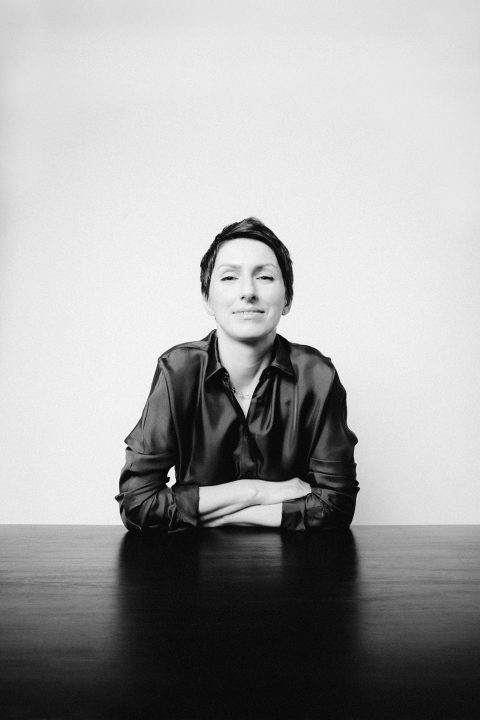Yulia Makeyeva has found many connections to Jersey since moving here four years ago…

On the wall at Yulia’s art studio hangs a piece of white scrim threaded through with pine needles. Stunning in its simplicity. “It’s about fragility, a humble material, a skill gained through meticulous repetition,” Yulia says. The pine needle is both needle and thread in this elegant and delicate work of art. All of Yulia’s work is tied together with this idea of line and thread reminding us that all things are connected, tied together. The past and the present are interwoven in her work. Two years ago, Yulia was inspired by the story “The Gift” on the Jersey War Tunnels website. The story tells of a farmer’s wife who, during the Occupation, gives food to one of the slave workers escaped from the labour camp. In return, he came back to thank her – to give her a needle—his only possession. “That story moved me to tears,” Yulia says. “A needle is something you can make with. It’s a tool. And it’s a treasure in this situation. I admire this transformation of a mundane object into something new and b
eautiful. It is one of many incredible stories that I’ve learned researching about Jersey history. Personal stories are always a starting point for my work. I gain energy from memories,” she says, making me immediately think of the thin lightning bolt slivers deposited into Dumbledore’s Pensieve.

Yulia’s recent sculpture ‘Continuum’ was a part of the Skipton Big Ideas exhibition at the Town Church, produced by Jersey Art House. The piece comprised hundreds of wires each threaded with a bead or fragment of jewellery. “I started collecting jewellery for this project two years ago. It came from people I know, generous strangers as well as from the local charity shops and recycling centres. Jewellery has an innate memory and significance. It is usually in immediate contact with our skin. It was probably received as a gift, bought on a trip abroad or was handmade. It is mainly a fashion accessory and when outdated or broken it is tossed away. My sculpture gave it new life,” Yulia says. “There is an anthropological and social aspect, collecting all these unwanted artefacts from people. It is an exploration of a found material and its value. What lost importance for others became valuable material for my work. It was precious to witness how visitors followed th
e dynamic wire lines and discovered a new bead in each section. Small or big, regardless of material it was made of, they gained a new status and power.”

Her two ongoing projects are both rooted in Jersey history. Yulia is researching on the history of knitting, nautical knotting and rope making on the island. Her other project centres around the fate of Russian speaking slave workers in Jersey during the Occupation.
She sees art as a form of care. ‘Art should be candid and true. My hopes, concerns and excitements, my life experience all converted into a line in my sketchbook,” she says, and her art makes lines from one person to another, one time to another, one place to another.


